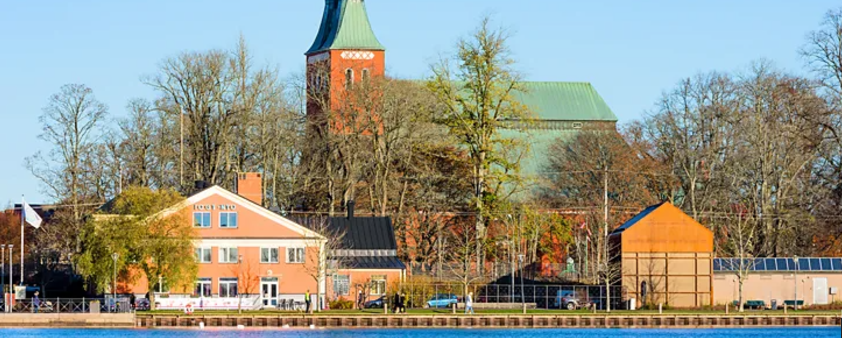Sweden: Siltanews – News Desk
The 1,000-year-old Swedish city of Växjö sits 450km south-west of Stockholm in the central region of Småland amid a lush tapestry of sylvan landscapes dotted by hundreds of lakes. This is a land known as the Glasriket (“Glass Kingdom”) that’s home to a string of globally renowned glassworks such as Kosta Boda and Orrefors who have created crystalline gorgeousness from fiery furnaces since the 1740s.
But that glassmaking heritage is now matched by changemaking, this compact city of fewer than 100,000 inhabitants has become a global beacon in the battle against climate change. Nearly a decade before Swedish climate activist Greta Thunberg was even born, Växjö set itself on a path to a new vision of urban living that’s now been emulated worldwide.
“It was a seminar in 1996 led by the mayor, which asked the question: ‘What would it be like to live in a fossil free city?’,” explains Henrik Johansson, environmental strategist for Växjö Municipality. By the end of that meeting, a unanimous vote saw Växjö become the first city in the world to commit to become fossil fuel free. This has now evolved into a bigger target of climate neutrality by 2030 – 15 years ahead of Sweden’s nationwide commitment.
Växjö’s groundbreaking 1990s commitment drew media coverage from as far afield as Japan, with TV crews ironically taking fuel-guzzling long-distance flights to visit the place Johansson wryly describes as “this crazy town looking to go fossil free”. None of it seems crazy now, however, with Växjö’s per capita carbon emissions slashed by more than 70% from 1990s levels, all while the city has grown in population by a third and doubled its per capita GDP.
Here, local buses and council vehicles run on biofuel made from domestic household organic waste. More than 90% of the city’s energy, meanwhile, is sourced from forestry by-products and other biomass, with plentiful material coming from the vast surrounding forests. This ranges from sawdust from local timber mills to branches left from tree-felling to make goods for IKEA – the global design giant born just a half hour train ride away in the town of Älmhult.
The few CO2 emissions that linger in the air stem from personal car users who are still not taking advantage of one of Sweden’s best provisions of electric car charging stations, plus places to fill up on non-fossil biofuels such as ethanol. Local buses and council vehicles run on biofuel made from domestic household organic waste.
Sweden’s wooden city that was green before Greta

Ashraf Gaber, the Editor in Chief & CEO of Silta News
He's an Egyptian Thinker and Columnist, working and living between Dubai, Cairo and Zurich.
Leave a comment
